Ahsan Mehmood
Asymmetric Modulation Design for Fluid-Antenna SWIPT Systems
Sep 09, 2025Abstract:In this work, we propose the design of modulation schemes that improve the rate-energy region of fluid antenna-assisted simultaneous wireless information and power transfer (SWIPT) systems. By considering the nonlinear characteristics of practical energy harvesting circuits, we formulate a dual-objective rate-energy (RE) region optimization problem to jointly maximize the discrete-input mutual information (DIMI) and harvested current. The problem is solved using the epsilon-constraint method and optimized constellations are designed for various energy harvesting thresholds. We then evaluate the performance of the optimized constellations under three different fluid antenna (FA) port selection strategies: (i) Best Port, (ii) Fixed Port, and (iii) Random Port. Our simulation results demonstrate significant performance gains of optimized constellations over conventional constellations in both information rate and energy harvesting.
Cuff-less Arterial Blood Pressure Waveform Synthesis from Single-site PPG using Transformer & Frequency-domain Learning
Jan 09, 2024



Abstract:We propose two novel purpose-built deep learning (DL) models for synthesis of the arterial blood pressure (ABP) waveform in a cuff-less manner, using a single-site photoplethysmography (PPG) signal. We utilize the public UCI dataset on cuff-less blood pressure (CLBP) estimation to train and evaluate our DL models. Firstly, we implement a transformer model that incorporates positional encoding, multi-head attention, layer normalization, and dropout techniques, and synthesizes the ABP waveform with a mean absolute error (MAE) of 14. Secondly, we implement a frequency-domain (FD) learning approach where we first obtain the discrete cosine transform (DCT) coefficients of the PPG and ABP signals corresponding to two cardiac cycles, and then learn a linear/non-linear (L/NL) regression between them. We learn that the FD L/NL regression model outperforms the transformer model by achieving an MAE of 11.87 and 8.01, for diastolic blood pressure (DBP) and systolic blood pressure (SBP), respectively. Our FD L/NL regression model also fulfills the AAMI criterion of utilizing data from more than 85 subjects, and achieves grade B by the BHS criterion.
A low-cost PPG sensor-based empirical study on healthy aging based on changes in PPG morphology
Dec 20, 2023Abstract:We present the findings of an experimental study whereby we correlate the changes in the morphology of the photoplethysmography (PPG) signal to healthy aging. Under this pretext, we estimate the biological age of a person as well as the age group he/she belongs to, using the PPG data that we collect via a non-invasive low-cost MAX30102 PPG sensor. Specifically, we collect raw infrared PPG data from the finger-tip of 179 apparently healthy subjects, aged 3-65 years. In addition, we record the following metadata of each subject: age, gender, height, weight, family history of cardiac disease, smoking history, vitals (heart rate and SpO2). We pre-process the raw PPG data to remove noise, artifacts, and baseline wander. We then construct 60 features based upon the first four PPG derivatives, the so-called VPG, APG, JPG, and SPG signals, and the demographic features. We then do correlation-based feature-ranking (which retains 26 most important features), followed by Gaussian noise-based data augmentation (which results in 15-fold increase in the size of our dataset). Finally, we feed the feature set to three machine learning classifiers (logistic regression, decision tree, random forest), and two shallow neural networks: a feedforward neural network (FFNN) and a convolutional neural network (CNN). For the age group classification, the shallow FFNN performs the best with 98% accuracy for binary classification (3-15 years vs. 15+ years), and 97% accuracy for three-class classification (3-12 years, 13-30 years, 30+ years). For biological age prediction, the shallow FFNN again performs the best with a mean absolute error (MAE) of 1.64.
Vascular Ageing and Smoking Habit Prediction via a Low-Cost Single-Lead ECG Module
Aug 08, 2023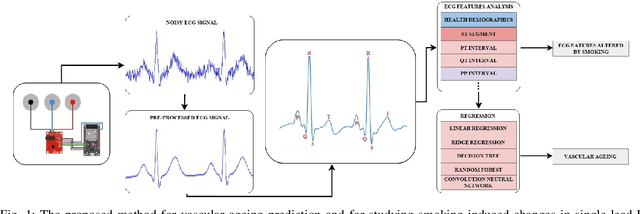
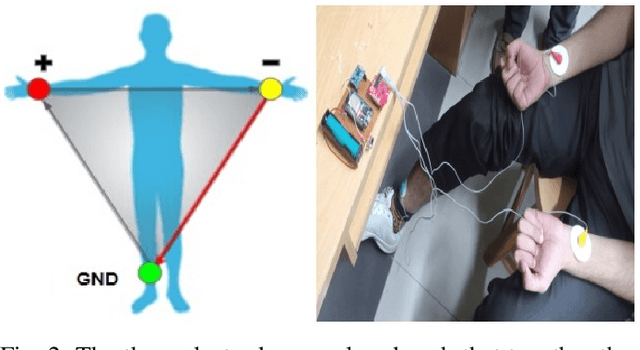
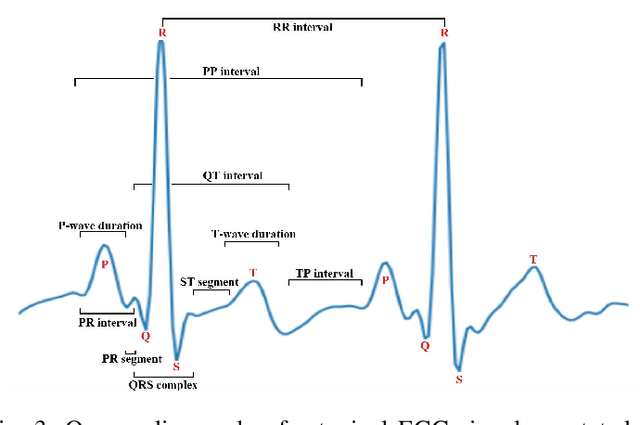
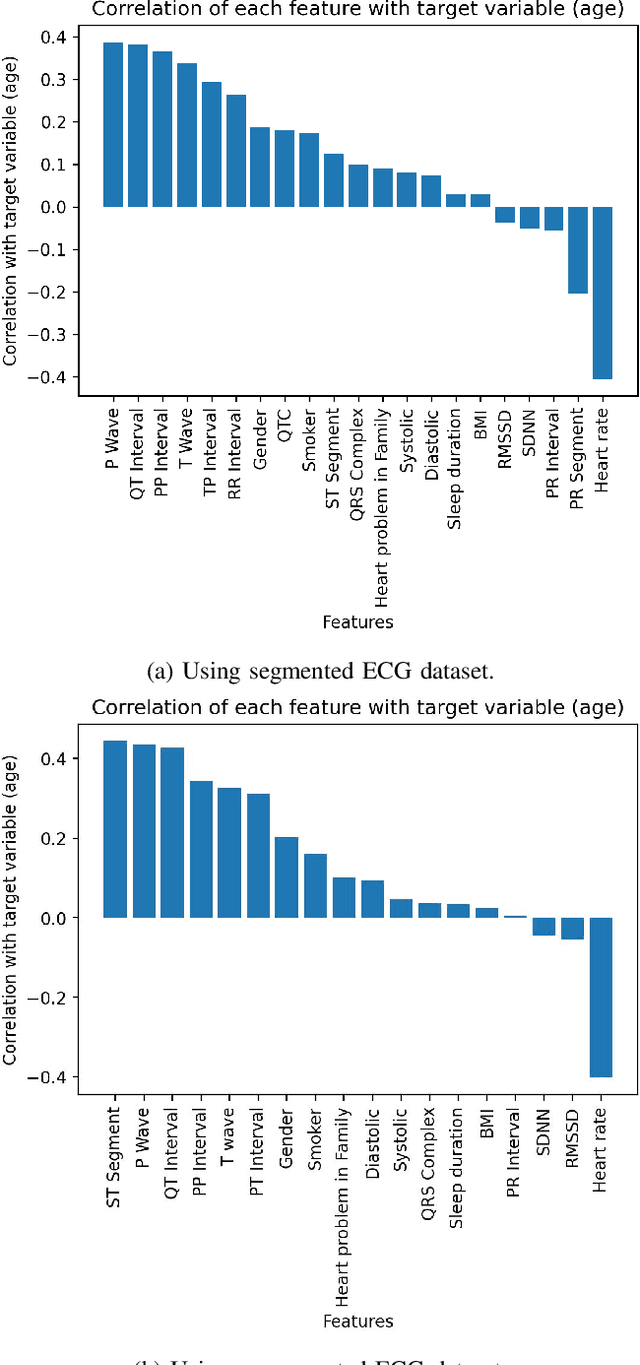
Abstract:This paper presents a novel low-cost method to predict: i) the vascular age of a healthy young person, ii) whether or not a person is a smoker, using only the lead-I of the electrocardiogram (ECG). We begin by collecting (lead-I) ECG data from 42 healthy subjects (male, female, smoker, non-smoker) aged 18 to 30 years, using our custom-built low-cost single-lead ECG module, and anthropometric data, e.g., body mass index, smoking status, blood pressure etc. Under our proposed method, we first pre-process our dataset by denoising the ECG traces, followed by baseline drift removal, followed by z-score normalization. Next, we divide ECG traces into overlapping segments of five-second duration, which leads to a 145-fold increase in the size of the dataset. We then feed our dataset to a number of machine learning models, a 1D convolutional neural network, a multi-layer perceptron (MLP), and ResNet18 transfer learning model. For vascular ageing prediction problem, Random Forest method outperforms all other methods with an R2 score of 0.99, and mean squared error of 0.07. For the binary classification problem that aims to differentiate between a smoker and a non-smoker, XGBoost method stands out with an accuracy of 96.5%. Finally, for the 4-class classification problem that aims to differentiate between male smoker, female smoker, male non-smoker, and female non-smoker, MLP method achieves the best accuracy of 97.5%. This work is aligned with the sustainable development goals of the United Nations which aim to provide low-cost but quality healthcare solutions to the unprivileged population.
Your smartphone could act as a pulse-oximeter and as a single-lead ECG
May 21, 2023Abstract:In the post-covid19 era, every new wave of the pandemic causes an increased concern among the masses to learn more about their state of well-being. Therefore, it is the need of the hour to come up with ubiquitous, low-cost, non-invasive tools for rapid and continuous monitoring of body vitals that reflect the status of one's overall health. In this backdrop, this work proposes a deep learning approach to turn a smartphone-the popular hand-held personal gadget-into a diagnostic tool to measure/monitor the three most important body vitals, i.e., pulse rate (PR), blood oxygen saturation level (aka SpO2), and respiratory rate (RR). Furthermore, we propose another method that could extract a single-lead electrocardiograph (ECG) of the subject. The proposed methods include the following core steps: subject records a small video of his/her fingertip by placing his/her finger on the rear camera of the smartphone, and the recorded video is pre-processed to extract the filtered and/or detrended video-photoplethysmography (vPPG) signal, which is then fed to custom-built convolutional neural networks (CNN), which eventually spit-out the vitals (PR, SpO2, and RR) as well as a single-lead ECG of the subject. To be precise, the contribution of this paper is two-fold: 1) estimation of the three body vitals (PR, SpO2, RR) from the vPPG data using custom-built CNNs, vision transformer, and most importantly by CLIP model; 2) a novel discrete cosine transform+feedforward neural network-based method that translates the recorded video- PPG signal to a single-lead ECG signal. The proposed method is anticipated to find its application in several use-case scenarios, e.g., remote healthcare, mobile health, fitness, sports, etc.
A Deep Learning & Fast Wavelet Transform-based Hybrid Approach for Denoising of PPG Signals
Jan 16, 2023Abstract:This letter presents a novel hybrid method that leverages deep learning to exploit the multi-resolution analysis capability of the wavelets, in order to denoise a photoplethysmography (PPG) signal. Under the proposed method, a noisy PPG sequence of length N is first decomposed into L detailed coefficients using the fast wavelet transform (FWT). Then, the clean PPG sequence is reconstructed as follows. A custom feedforward neural network (FFNN) provides the binary weights for each of the wavelet sub-signals outputted by the inverse-FWT block. This way, all those sub-signals which correspond to noise or artefacts are discarded during reconstruction. The FFNN is trained on the Beth Israel Deaconess Medical Center (BIDMC) dataset under the supervised learning framework, whereby we compute the mean squared-error (MSE) between the denoised sequence and the reference clean PPG signal, and compute the gradient of the MSE for the back-propagation. Numerical results show that the proposed method effectively denoises the corrupted PPG and video-PPG signal.
Transfer learning for non-intrusive load monitoring and appliance identification in a smart home
Jan 08, 2023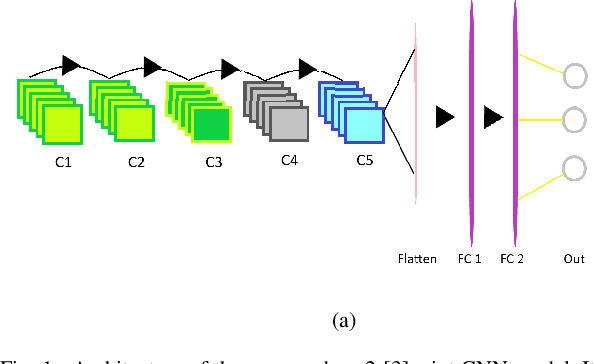

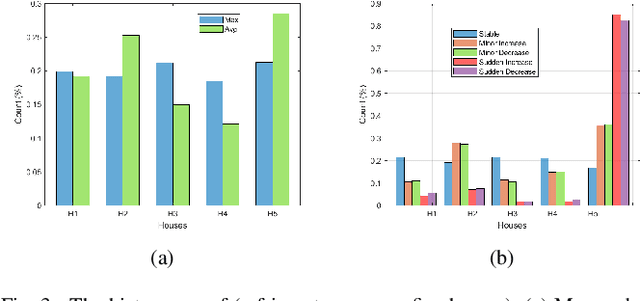

Abstract:Non-intrusive load monitoring (NILM) or energy disaggregation is an inverse problem whereby the goal is to extract the load profiles of individual appliances, given an aggregate load profile of the mains of a home. NILM could help identify the power usage patterns of individual appliances in a home, and thus, could help realize novel energy conservation schemes for smart homes. In this backdrop, this work proposes a novel deep-learning approach to solve the NILM problem and a few related problems as follows. 1) We build upon the reputed seq2-point convolutional neural network (CNN) model to come up with the proposed seq2-[3]-point CNN model to solve the (home) NILM problem and site-NILM problem (basically, NILM at a smaller scale). 2) We solve the related problem of appliance identification by building upon the state-of-the-art (pre-trained) 2D-CNN models, i.e., AlexNet, ResNet-18, and DenseNet-121, which are trained upon two custom datasets that consist of Wavelets and short-time Fourier transform (STFT)-based 2D electrical signatures of the appliances. 3) Finally, we do some basic qualitative inference about an individual appliance's health by comparing the power consumption of the same appliance across multiple homes. Low-frequency REDD dataset is used to train and test the proposed deep learning models for all problems, except site-NILM where REFIT dataset has been used. As for the results, we achieve a maximum accuracy of 94.6\% for home-NILM, 81\% for site-NILM, and 88.9\% for appliance identification (with Resnet-based model).
Throughput maximization of an IRS-assisted wireless powered network with interference: A deep unsupervised learning approach
Aug 05, 2021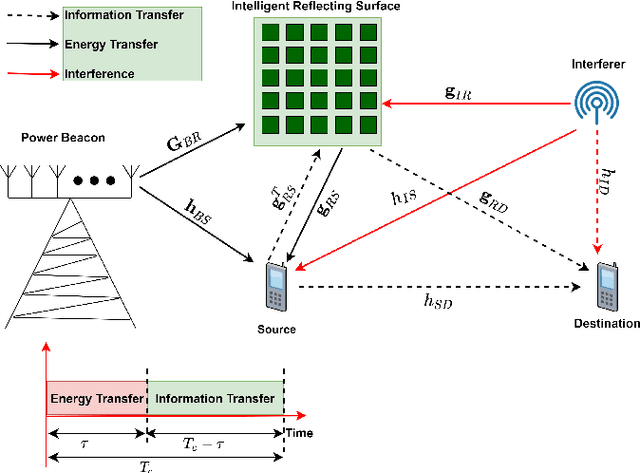
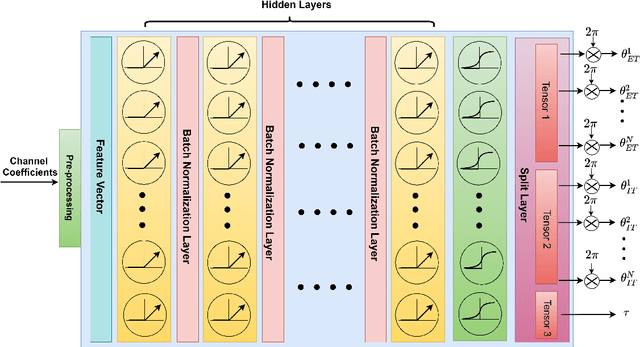
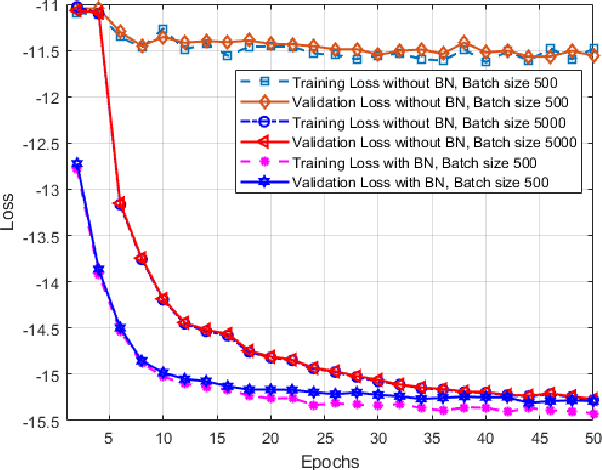
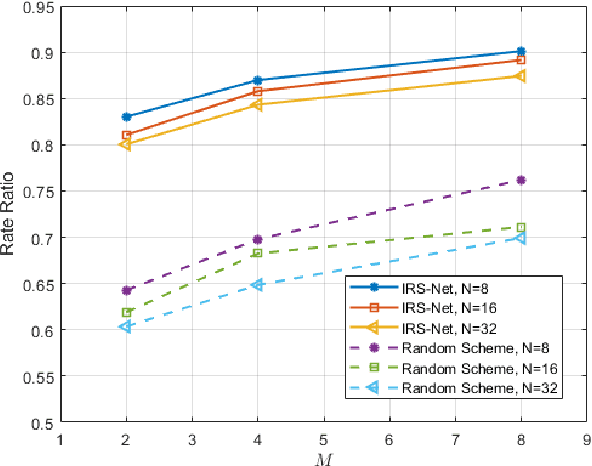
Abstract:In this paper, we consider an intelligent reflecting surface (IRS)-assisted wireless powered communication network (WPCN) in which a multi antenna power beacon (PB) sends a dedicated energy signal to a wireless powered source. The source first harvests energy and then utilizing this harvested energy, it sends an information signal to destination where an external interference is also present. More specifically, we formulated an analytical problem in which objective is to maximize the throughput by jointly optimizing the energy harvesting (EH) time and IRS phase-shift matrices corresponding to both energy transfer and information transfer phases. The formulated optimization problem is high dimensional non-convex, thus a good quality solution can be obtained by invoking any evolutionary algorithm such as Genetic algorithm (GA). It is well-known that the performance of GA is generally remarkable, however it incurs a high computational complexity. Thus, GA is unable to solve the considered optimization problem within channel coherence time, which limits its practical use. To this end, we propose a deep unsupervised learning (DUL) based approach in which a neural network (NN) is trained very efficiently as time-consuming task of labeling a data set is not required. Numerical examples show that the proposed approach significantly reduces time complexity making it feasible for practical use with a small loss in achievable throughput as compared to the GA. Nevertheless, it is also shown through numerical results that this small loss in throughput can be reduced further either by increasing the number of antennas at the PB and/or decreasing the number of reflecting elements of the IRS.
 Add to Chrome
Add to Chrome Add to Firefox
Add to Firefox Add to Edge
Add to Edge